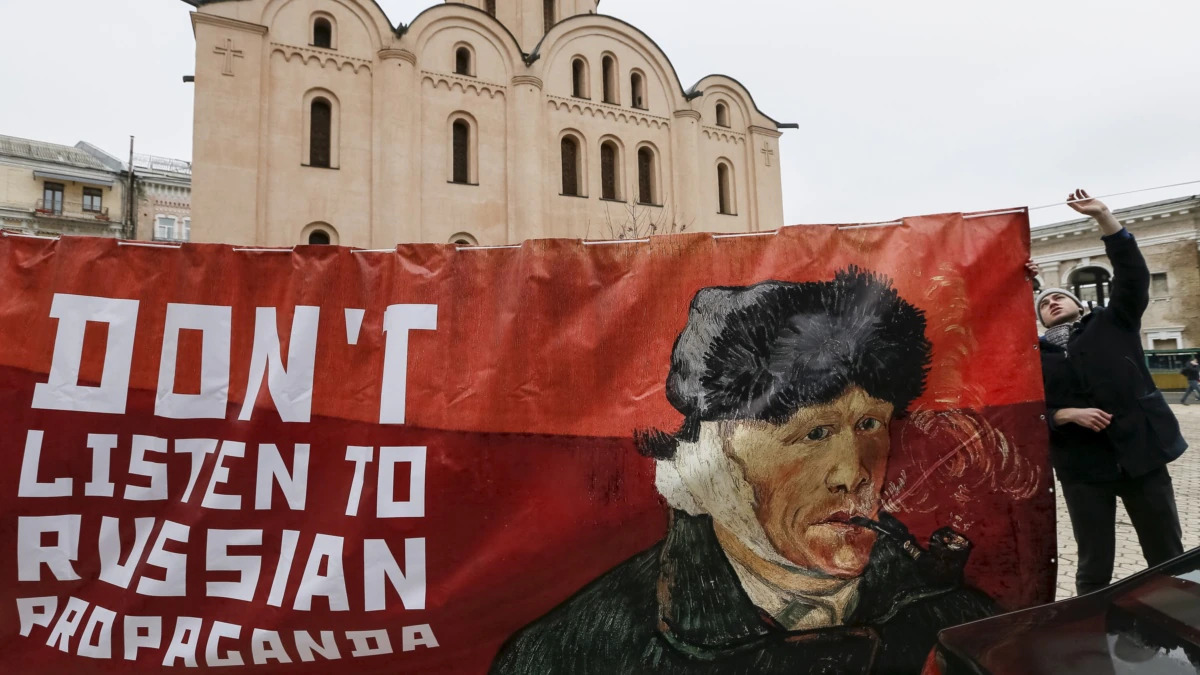TWO MONTHS OF SELECTED LIES
Опубліковано: 2022-05-14 in International

The Russian-Ukrainian war is marked not only by the scale of hostilities, but also by the powerful informational influence of the aggressor. However, this time, compared to 2014, there are some peculiarities.
RIA Novosti, a state-owned news agency that ruled out third-party informational influence on content, was chosen to analyze Russia's strategic propaganda narratives.
Analysis of the RIA Novosti news feed from February 24 to April 24, 2022, reveals the following strategic narratives of Russian propaganda:
- Use of the term "special military operation" in relation to the war in Ukraine. It is easy to guess that the Kremlin does not dare to call its own actions the word "war" (Let me remind you that in 2008 the phrase "coercion to peace" was used in Georgia)
- The consistent division of the enemy into "Armed Forces" and "nationalist battalions" seems to be one of the key narratives in the current situation, as well as the thesis "nationalists are holding hostage millions of people." The term "nationalist / Nazi" battalions correlates with the Kremlin's historical policy as a whole.
- Intensive use of the reflection principle, namely the transfer of events from the Ukrainian information field to the Russian one with a radical change of context. Firstly, in such cases we are talking about "crimes of nationalists", which are accompanied by "testimonies of local residents." The use of "nationalists" or "Nazis" should explain to Russian citizens the reasons for the "denazification" of Ukraine
- Mostly imitation use of videos about successful attacks of helicopters and planes of the Russian army, in which there is a lot of editing and little in common with reality. It should be considered as an informational vaccination from the flow of reports about the successes of the Ukrainian military, which is supported by amateur videos of the servicemen of the Armed Forces.
- RIA Novosti is in active informational interaction with the so-called "war correspondents" (Russian propagandists who provide information services to local intelligence services)
- After the occupation of a number of settlements of Ukraine, RIA Novosti covers the work of occupation administrations, the actions of collaborators
- A separate information direction is the description of the "victory" of Ramzan Kadyrov and Kadyrovites in Ukraine, which indicates the direction of the main resource of propaganda inside the Russian Federation, in particular, to neutralize the remnants of the opposition. It is known that Kadyrov and his "guard" are one of the main tools to intimidate the Russian opposition
- RIA Novosti willingly spreads "repentance and confessions of Ukrainian prisoners of war"
- Demonstration of support for the "special military operation" in various countries around the world (Armenia, Venezuela, etc.) to promote the "greatness of Russia" and neutralize the outrage of the world community about the Kremlin's actions
- Spreading speculation about the possibility of creating a "dirty nuclear bomb" by Ukraine after the capture of Chernobyl and Zaporozhye nuclear power plants by Russian troops
- Spreading a fake about "American biological laboratories on the territory of Ukraine", which was promoted by representatives of "OPZZh" before the war
- Promoting the symbols of the "special military operation" to the information space of the Russian Federation (this is not only an obvious innovation compared to 2008, but also the desire to respond to the volunteer movement in Ukraine and public support for Ukrainian defenders). In this way, Russian propaganda actively labels "friend-or-foe"
- I would like to note the intensive disinformation support of the Russian-Ukrainian ceasefire talks.
- Instilling hatred against Western countries that imposed sanctions against Russia after the start of the war in Ukraine.
CONCLUSIONS:
- All the power of the Russian propaganda machine is directed inside the Russian Federation, attempts to convey information to Western consumers are made by Russia Today and Sputnik Media with a different, more veiled content.
- The basis for the formation of propaganda messages is the technology of post-truth, intensive interpretation of events in a favorable light.
- Information reports on the actions of Russian troops in the occupied territories of Ukraine are reminiscent of the coverage of the "limited contingent of Soviet troops" in Afghanistan in the 1980s
- The advancement of the tactical symbols of the "special military operation" V and Z into the information space of Russia testifies to the failure of the blitzkrieg and the desire to provide information support to the actions of the Russian army in Ukraine.
- RIA Novosti is a tuning fork of the Russian propaganda machine and after the war its leaders, as well as the leaders of other propaganda mouthpieces, must be held accountable.
Yevhen Mahda, director of Institute of World Policy
Photo REUTERS